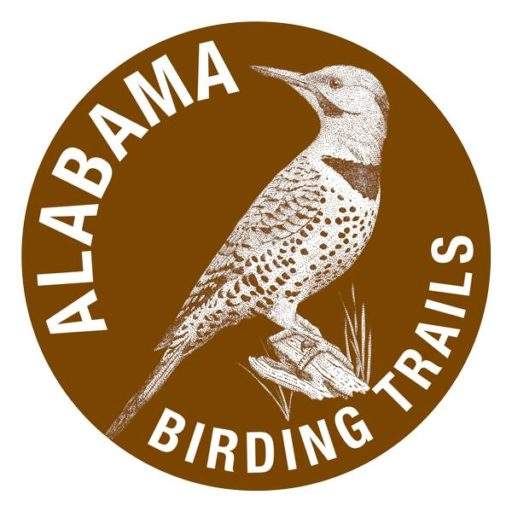Coastal, Dauphin Island - Bayou La Batre Loop | Mobile | Best Seasons: Fall | Spring | Winter
Dauphin Island Airport is set in a salt water marsh where Clapper Rail (common) and Virginia Rail and Sora (fairly common in fall and winter), though secretive can be found.
Other potential birds to be seen at the Dauphin Island Airport: Yellow Rail is very rare in winter as is Black Rail most of the year. Least Bittern is a breeding bird, but very secretive. Nelson’s and Sharp-tailed Sparrows may be seen in the marsh and grasses near the interpretative panel. Scan the grasses on either side of the runways for migrating Bobolink and other passerines.
At low tide, the ponds to the Sound side (north) are good for shorebirds and long-legged waders, particularly Snowy and Reddish Egret. Keep an eye out for Tri-colored Herons. Also in winter, scan the bay for waterfowl including Lesser Scaup, Bufflehead, Red-breasted Merganser, Horned and Eared Grebes. Barn, Northern Rough-winged and Cliff Swallows congregate on the power line during the breeding season, along with Red-winged Blackbirds and Northern Mockingbirds. There is an active Osprey nest in the south part of the marsh. If your visit is timed right, you may observe the parents feeding their hatchlings. During spring and fall migration check the brush and trees near Omega Street for passerines, particularly after a front with strong west winds. This is the time and place for possible vagrants.
The airport is a county-owned public-use facility in Mobile County, Alabama, just northwest of the central business district of Dauphin Island. Observe the no trespassing signs for the Dauphin Island airport proper. Though this is a small general aviation strip there is regular helicopter traffic out to the gas wells in the Gulf.
GPS: N30.25746 W-88.12391
Site Accessibility
The airport provides an excellent and up-close opportunity to watch the adjacent marsh from the parking lot or from your car. Tri-colored Heron, rails and many other wading birds can be seen from the paved parking area. An Osprey nest is visible as well.
If following directions provided in the Coastal Birding Trail booklet, return along Bienville Boulevard back to the water tower. Continue to the next intersection and turn right (north) on Lackland Street after passing the town hall on the left. Proceed on Lackland two blocks to Chaumont Avenue, turn left (west) and continue on Chaumont to Omega Street. Bear right toward the airport where there is salt marsh on both sides of the road. Continue to the end of the road and park.
Amenities Available: Wheelchair Accessible
Nearby Sites
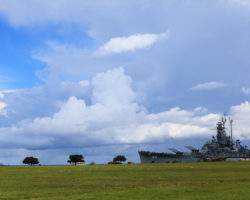
Battleship Park
Battleship Park presents the birder with a diversity of habitat to explore and a great variety of birds to observe. Pinto Pass and the mudflats of Mobile Bay filled with waterfowl in winter and shorebirds during migration, short grass lawns for dowit …
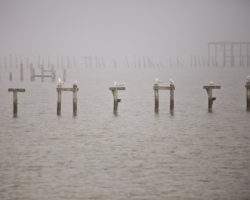
Bayfront Park
Look for gulls and terns on the pilings in the bay and shorebirds along the shoreline. From the shoreline, walk the boardwalk to an inland marsh. Look closely for Least Bittern and Clapper Rail. During fall and winter, Virginia Rail and Sora are regu …
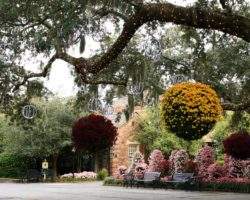
Bellingrath Gardens
The entire 900-acre complex is a bird sanctuary and there is an observation tower overlooking the Fowl River and salt marsh. Although good year-round, birding potential for neotropical migrants increases during the spring and fall months. Cruises thr …
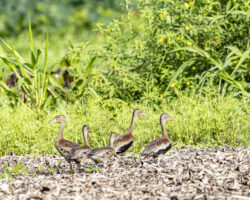
Blakeley Island – Mud Lakes
Depending on water levels and time of year, the first pond on the right (south) often offers the best conditions for viewing waterfowl like Black-bellied Whistling-Duck, Mottled Duck, and Northern Shoveler, and various shorebirds, gulls and terns. Th …
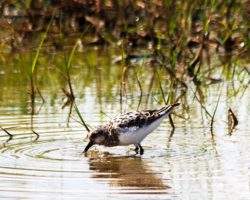
Blakeley Island – North Blakeley Disposal Area
The Mud Lakes on Blakeley Island are well known to Alabama birders as one of the best spots in South Alabama for shorebirds and waterfowl. The Island, at the western end of the Mobile Causeway, along the east side of US 90A, can be reached from eithe …
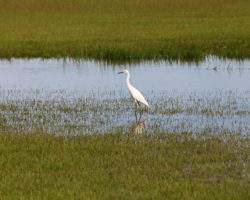
Blakeley Island – South Blakeley Disposal Area
At the top of the dike, scan the large ponds in various stages of management; you must stay on the perimeter dikes. Best areas usually are in the northwest and southwest corners of the pond. This is a regular site for Black-bellied Whistling-Ducks, w …
